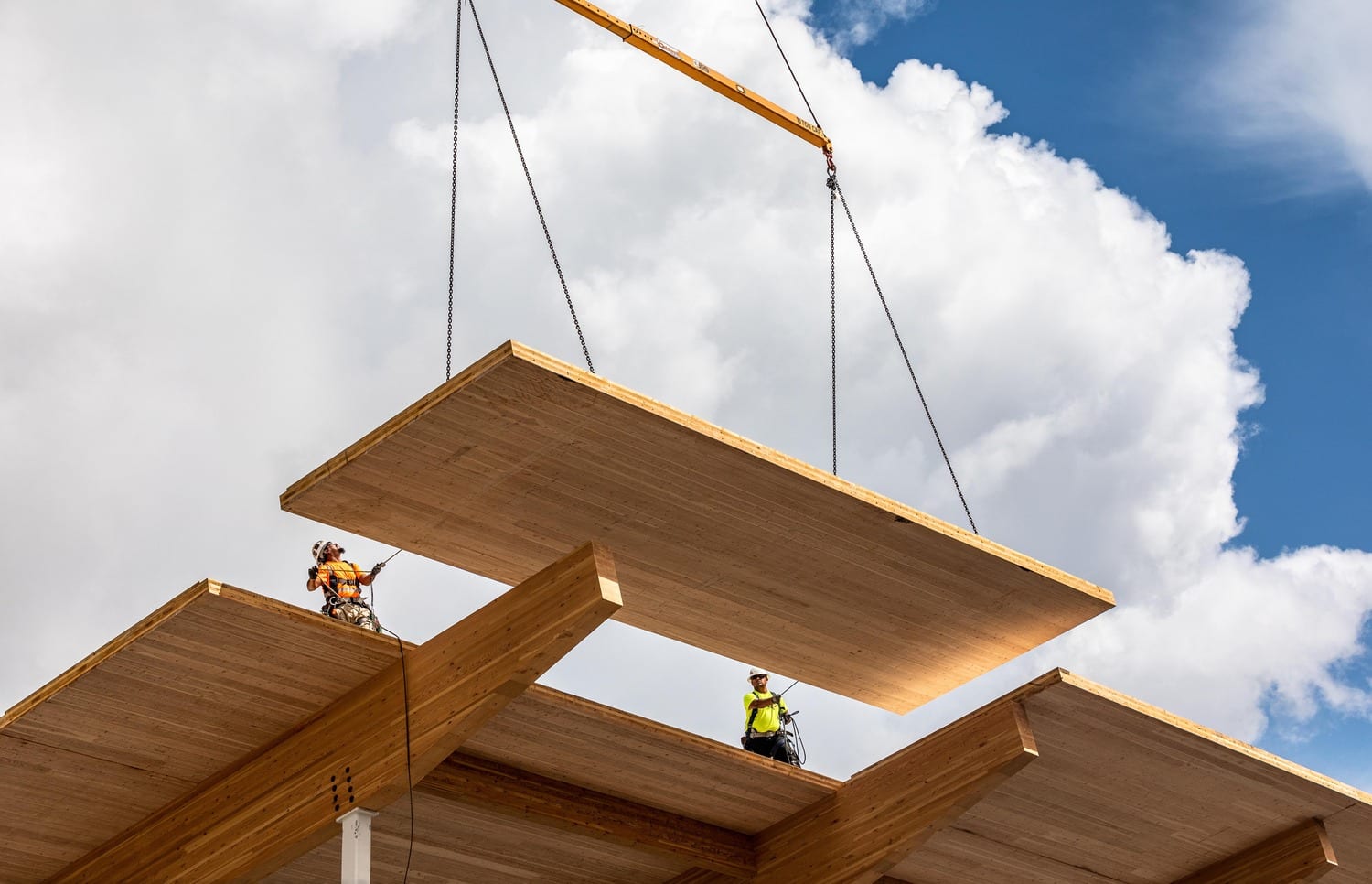
Through the rapid growth of urban cities post WWII, the building sector has, and continues to be one of the largest contributors to carbon emissions. Modern building materials such as steel and concrete produce carbon throughout the gathering, production, and transportation process. While these materials have pushed boundaries within the last 100-years, leading architects, engineers and environmental advocates have resorted back to what we have known best for thousands of years, wood.
Typically, in the past, as regulated by the International Building Code (IBC), wood construction has an allowable building height of four (4)-stories tall. These restrictions are implemented for safety concerns such as fire ratings and structural stability. However, through engineered wood products such as Cross Laminated Timber (CLT), Dowel Laminated Timber (DLT), Nail laminated Timber (NLT), and Glue Laminated Timber (Glulam), wood buildings have reached heights of nearly 20-stories tall. These products have a structural integrity similar to concrete with increased environmental benefits, increased installation efficiency, and less construction waste while still meeting standard building code requirements.
Out of the three (3) major building materials (wood, concrete and steel), mass timber is by far the most sustainable on the market. Not only does heavy timber have a low embodied carbon level, but it also stores carbon it has sequestered while in tree-form. In addition, mass timber is easily prefabricated and assembled off site, making installation on site efficient while producing less waste. Case studies show a mid-story building being fully assembled and opened to the public within 11-months. Through the ease of installation and production of mass timber materials, it also reduces the overall cost of construction. Therefore, mass timber allows for increased affordability and accessibility to communities.
Now I know what you may be thinking, “how can wood be fire resistant?”. Much like a log in a campfire, the mass timber members form a layer of char at the surface while still holding structural stability at the core. This allows the standard one (1)-hour fire rating to be achieved at columns, beams, and egress enclosures.
Types of Mass Timber
Cross Laminated Timber (CLT) is created through a series of dimensional lumber boards layered on top of one another with each layer rotated periductular to the prior layer. An adhesive is applied in between each layer to form a strong bond between the members. Typically, CLT is used for floors, ceilings, and walls.
Dowel Laminated Timber (DLT) is different from CLT in which each piece of dimensional lumber is laid on its side; however, instead of adhesive, holes are bored through each board and wooden dowels are inserted through each member. Since no adhesive is used, DLT is the only full-wood mass timber system. Typically, DLT is used for floors, ceilings, and walls.
Nail Laminated Timber (NLT) is constructed in a similar fashion as DLT but instead of dowels holding the members together, nails are used. Typically, NLT is used for floors, ceilings, and walls.
Glue-Laminated Timber (Glulam) is constructed through the use of various pieces of lumber laid in the same direction in multiple layers. Each layer is adhered through the use of glue and pressed to form a strong bond. Typically, glulam is used for columns and beams.
-J. Chase Edwards, LEED GA, Project Manager- The Falcon Group









